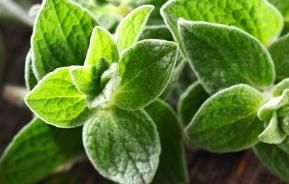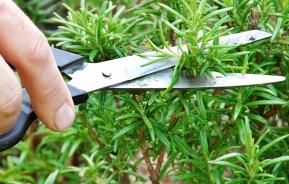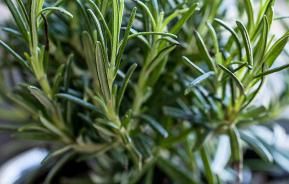There’s more to mint than just growing it to make mint sauce – the traditional accompaniment to roast lamb! The leaves can be used in many dishes, including salads, where they will infuse a delightful additional flavour. And they can be infused in hot water to make a refreshing herbal tea. Even the flowers can be used to also add colour to dishes.
How to grow mint
Cultivation
Mint is generally easy to grow – often too easy – and it’s spreading underground and overground runners can soon spread.
Mint needs a position in bright light, but with shelter from strong summer midday sun. A light, but partially shaded area is usually better for the full flavour to develop.
Mint will grow in most soils, but prefers a humus-rich, moist but not waterlogged one. They are perfect for growing in containers – often the best place for them to restrict their growth.
Mint varieties
There are lots of different varieties of mint to choose from (more than 100) with completely different tastes and flavours. You may be familiar with spearmint and peppermint, but what about chocolate, lemon, lime and grapefruit mints? And not all the different types have green leaves, there are also red and variegated mints, which are ornamental. Not all mints are good for culinary use, so check first before growing them.
Here are just some of the most popular and commonly available types of mint:
- Mentha x gracilis Ginger mint, with a spicy minty scent
- Mentha x piperita Peppermint
- Mentha x piperata f. citrata Chocolate Chocolate mint, tastes like chocolate creams!
- Mentha spicata Spearmint, garden mint, the most commonly grown mint
- Mentha suaveolens Apple mint, with a minty apple flavour
- Mentha suaveolens Variegata Pineapple mint, with a sweet scent and flavour and white variegated leaves
- Mentha x villosa var. alopecuroides Bowles’ mint, one of the best culinary mints

Planting mint
Mint can be planted directly into the ground, but it is vigorous and can spread rapidly. So, it is better to plant it in a large container filled with multi-purpose compost or John Innes compost. Place the pots near the back door so they are readily to hand when you need to pick some.
Alternatively, grow mint in a large, bottomless bucket or similar and plunge this into the soil. Make sure the lip of the container sits above soil surface to help prevent shoots from escaping over the top and then rooting into the surrounding soil.
If you’re growing several different types of mint, plant them in different containers and keep them away from each other, otherwise they can lose their individual flavours and end up smelling and tasting the same.
Suggested planting locations and garden types
Patios, containers, cottage and informal gardens.
How to care for mint
Give plants plenty of water when growing, especially those growing in containers and particularly during hot, dry weather.
Give liquid feeds of a balanced plant food throughout spring and summer.
During mid to late summer - especially a hot, dry one - plants can lose some of their vigour and freshness of their leaves. Trim the plants back, give them a good watering and feed to rejuvenate them for a supply of flavoursome leaves for a few more months.
When plants finish flowering, cut back the flowered shoots to 5cm (2in) from ground level to promote more new shoots. In early autumn, cut the plants back to ground level.
Lift and divide the plants every few years to keep them young and fresh and producing the best quality leaves.
Harvesting
Pick mint throughout the growing season and use it immediately or freeze it for use later on. Pick regularly to keep the plants compact and producing lots of new growth.
| Flowering season(s) | Summer |
|---|---|
| Foliage season(s) | Spring, Summer |
| Sunlight | Partial shade, Full sun |
| Soil type | Chalky, Clay, Loamy, Sandy |
| Soil pH | Neutral |
| Soil moisture | Moist but well-drained |
| Ultimate height | Up to 1m (40in) depending on variety |
| Ultimate spread | Up to 1.5m (5ft) |
| Time to ultimate height | 1-2 years |








